10 Plants That Repel Snakes (With Pictures)
-
Pete Ortiz
- Last updated:

If you like to garden but do not want to be greeted by a snake as you are tending to your plants, you have come to the right place. Snakes, like many other insects and animals, do not like plants that have a strong or nasty smell. There are also plants that snakes will avoid because they are not comfortable slithering on, and some that may be better suited for your deck or patio area.
Whether you prefer herbs or flowers, here are some plants that will keep the slithering reptile out of your yard and garden.
The 10 Plants That Repel Snakes
1. The Snake Plant aka Mother-In-Law’s Tongue
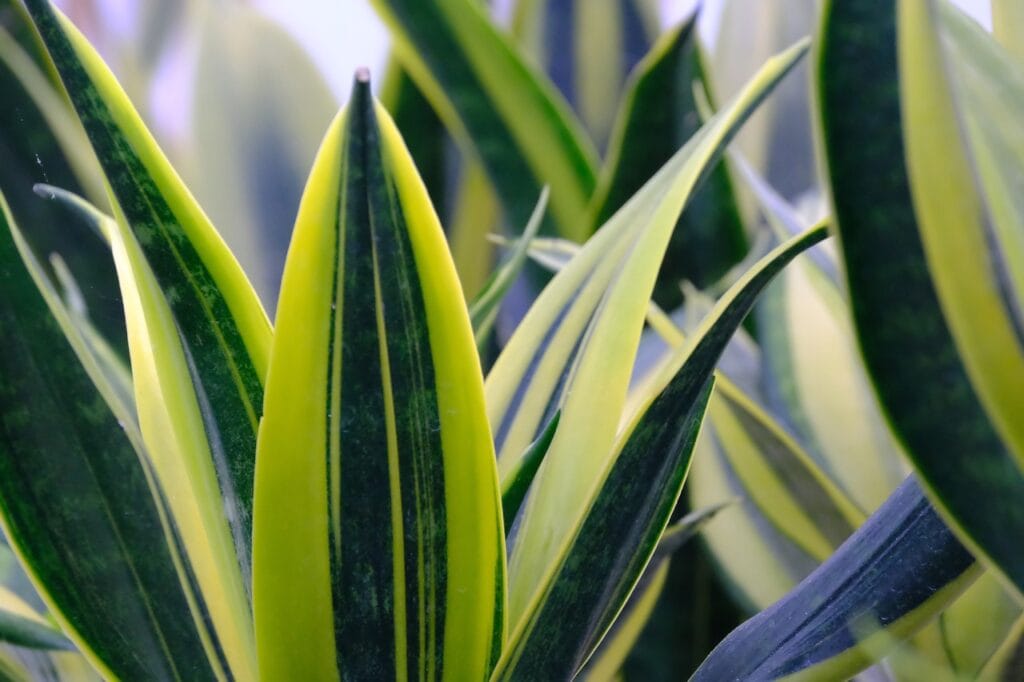
| Hardiness Zone: | 9–11 |
| Sun: | Shade to partial sun |
| Soil: | Well-drained |
The snake plant is an excellent choice for beginners who want to grow a plant that will repel snakes. Although there is no evidence to suggest that snakes are deterred by the visual appearance of the plant, some say they avoid the plant because they are afraid of it. The plant does have stiff leaves with sharp edges that repel snakes because it is physically uncomfortable for them to slither on.
If you live in an area that has cold months, you should put your snake plant in a container so you can bring it indoors during the winter months. They are succulent plants that do not do well in cold temperatures.
Snake plants are not a good option for pet owners, however. They are toxic to cats and dogs 1.
- Repels snakes
- Low maintenance
- Ideal for beginners
- Toxic to dogs and cats
2. Mums Plant
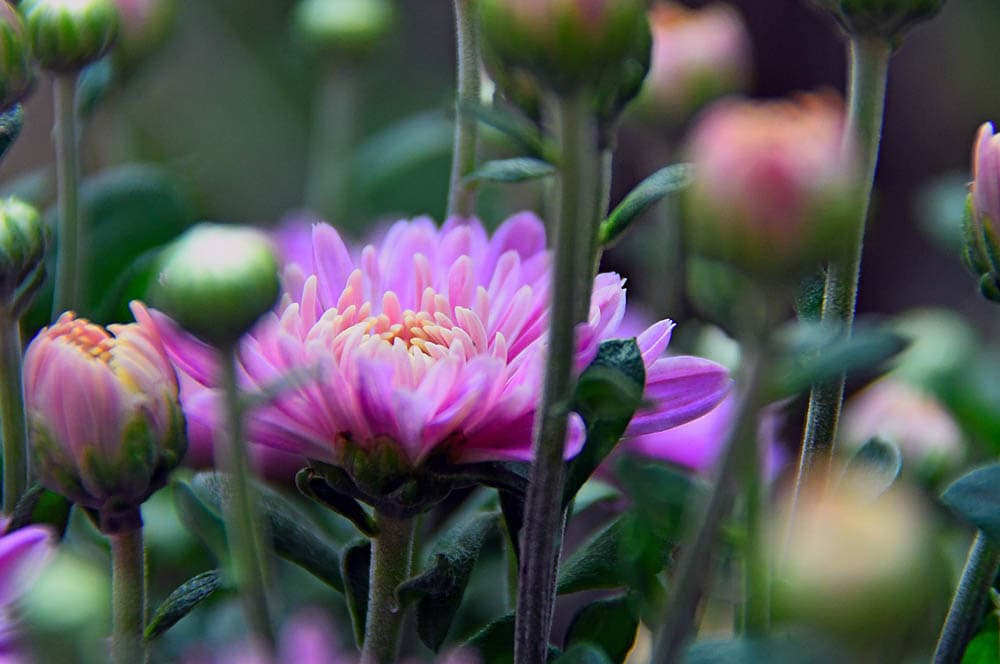
| Hardiness Zone: | 5–9 |
| Sun: | Full sun |
| Soil: | Well-drained |
Mums, also known as chrysanthemums, are common flowers used in displays for yard and porch displays during the fall. Although they are pretty and colorful, they are also deadly to snakes. According to the National Geographic 2, mums contain pyrethrum, a naturally occurring chemical contained in the flower that is not harmful to humans but is a natural insecticide.
In addition to being deadly to snakes, it can be used as an insecticide for insects like ants, mites, and aphids.
Since mums are toxic to dogs and cats, they may not be a good option for pet owners.
- Repels snakes
- Contains natural insecticide
- Variety of colors
- Toxic to dogs and cats
3. Holly Plant
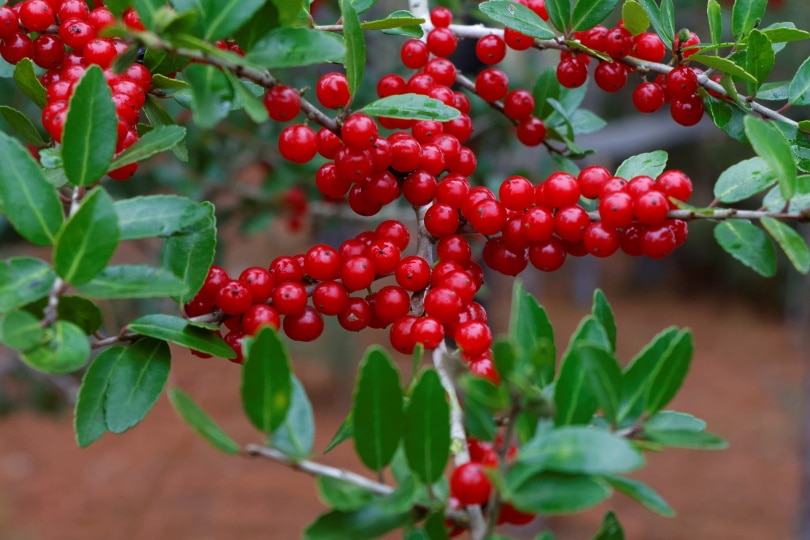
| Hardiness Zone: | 5–9 |
| Sun: | Full sun |
| Soil: | Moist, acidic soil |
Another beautiful plant that is an excellent snake repellent is the holly plant. The red berries on the holly plant are commonly seen in many types of holiday décor. The leaves are prickly and unpleasant to snakes, so they will avoid them. To maximize the benefit of the prickly holly leaves, spread them around your property to further deter snakes from your yard. Birds, animals, and insects find the leaves and berries tasty, however.
The berries on a holly plant are toxic to dogs, cats, other animals, and children so they may not be a good option for homes with children and pets.
- Pretty red berries
- Snake repellant
- Attracts insects, birds, and some animals
- Toxic to dogs, cats, and children
4. Wormwood Plant
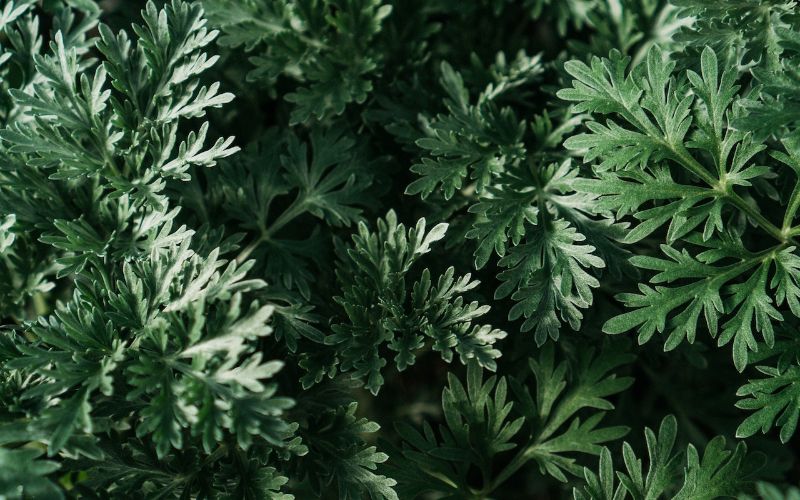
| Hardiness Zone: | 4–9 |
| Sun: | Full sun |
| Soil: | Well-drained |
Since the wormwood plant can grow up to three feet, it is an ideal choice for large gardens and patios. Planted along the perimeter of the garden or along the patio area is sure to keep snakes at bay. Snakes are repelled by the smell of the wormwood plant. Not only will the smell deter snakes, but the size of the plant can also make it difficult for snakes to invade your yard and garden.
The plant is also a good companion plant for ornamental gardens since it naturally repels insects, deer, and rabbits. Although there are some plants like anise, fennel, and caraway that should never be situated with a wormwood plant.
Since raw wormwood can be toxic, you may want to avoid planting it in areas that are accessible to children and pets.
- Good for large areas
- Snake repellant
- Good for companion planting
- Toxic to children and pets
- Not good with anise, fennel, and caraway plants
5. Marigold Plant

| Hardiness Zone: | 2–11 |
| Sun: | Full sun to partial shade |
| Soil: | Well-drained |
To prevent snakes from slithering into your yard, plant some marigolds. The strong scent of the flower will keep the reptiles at bay and give any garden dwellers the boot. The marigold is also a well-known insect repellent. So, planting marigolds will give you the benefit of repelling both insects and snakes. And, according to the American Society for the Prevention of Cruelty to Animals (ASPCA), they are non-toxic to dogs and cats.
Although marigolds are an ideal snake and insect repellent, they do attract other insects like caterpillars, slugs, and spider mites.
- Snake repellant
- Insect repellant
- Non-toxic to dogs and cats
- Attracts spider mites, slugs, and caterpillars
6. Lemongrass Plant
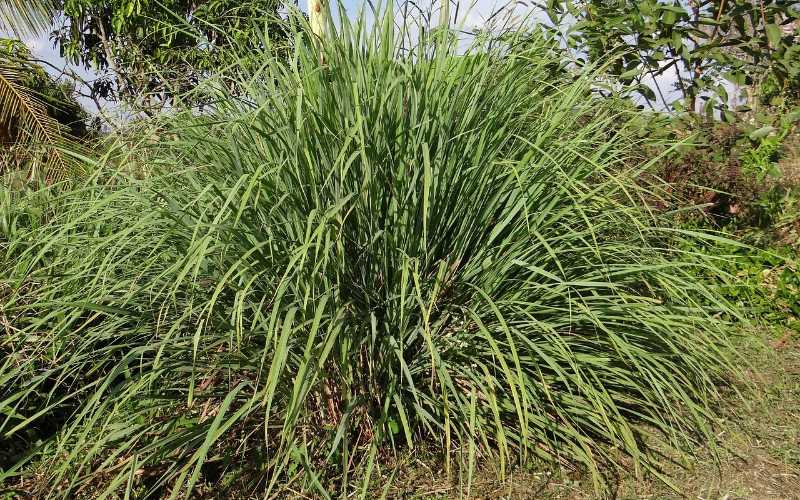
| Hardiness Zone: | 8B–12 |
| Sun: | Full sun |
| Soil: | Well-drained, moist |
Lemongrass, aka citronella grass, has a strong citrusy smell that snakes find offensive. Plant a little in your garden, and the snakes will stay away. In addition, you can plant the lemongrass in containers and place it next to your patio or deck. You will enjoy the relaxing fragrance and ensure that the snakes stay away, and the citronella will repel mosquitoes from your seating area.
In addition to repelling snakes, lemongrass makes an ideal companion plant for repelling insects like aphids and whiteflies.
The lemongrass plant is toxic to dogs, cats, and horses, however.
- Relaxing citrus smell
- Repels snakes and insects
- Good for companion planting
- Toxic to horses, cats, and dogs
7. Onion and Garlic Plant
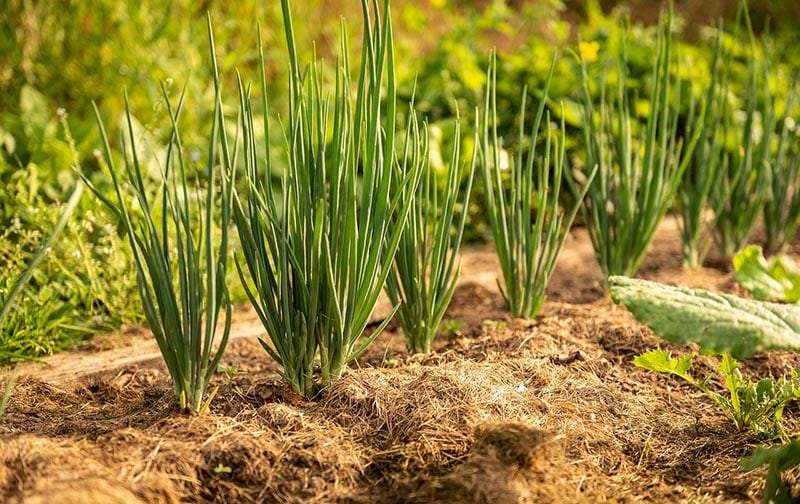
| Hardiness Zone: | 3–9 |
| Sun: | Full sun |
| Soil: | Well-drained |
Snakes are turned off by the pungent odor of onions and garlic, so they will avoid areas with an offensive smell. In addition, the smelly, oily substance that is secreted from the plant sticks to the snake’s skin and causes it to become disoriented. The effects of the oily fluid are like pepper spray for humans.
In addition, onions are good for repelling insects like cabbage loopers and carrot flies. Garlic is best for repelling insects like mites and caterpillars. So, putting some onion and garlic plants in your gardens will help with snakes and insects, too.
Garlic and onions are in the allium family, so they are considered toxic to dogs and cats if consumed in large amounts. There is also a cumulative effect if your pet nibbles on the plant and consumes small amounts over time.
- Pungent odor effective for repelling snakes and insects
- Great for repelling cabbage loopers and carrot flies
- Toxic to dogs and cats
8. Pink Agapanthus Plant

| Hardiness Zone: | 8–11 |
| Sun: | Full sun |
| Soil: | Well-drained, moist |
The pink agapanthus is another garlicky-smelling plant that is commonly referred to as society garlic or wild garlic. It is an attractive addition to any garden and will repel snakes with its pungent odor. The plant grows straight up with scallion-like leaves and pink blossoms.
The plant is edible and known to treat headaches and sinus disease in the field.
If eaten in large quantities, it can be toxic to animals, however.
- Pretty pink flowers
- Repels snakes
- Healing properties
- Large quantities are not good for pets
9. Snakeroot Plant
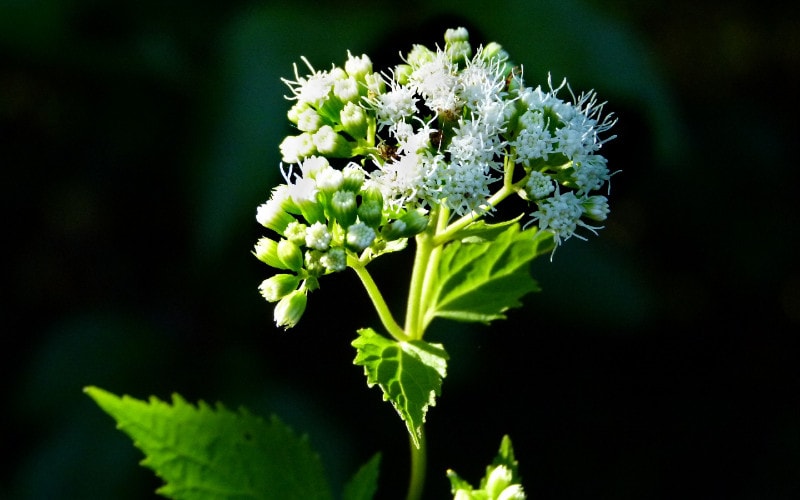
| Hardiness Zone: | 4–8 |
| Sun: | Partial shade |
| Soil: | Moist soil |
The snakeroot plant is commonly referred to as the devil pepper. In addition to bitter roots, the leaves are also bitter and abrasive with pointed tips and deter snakes from coming anywhere near them.
The plant is found mostly in wooded areas and contains tremetol and reserpine, chemicals that are poisonous to snakes and other animals like goats and horses.
Since this plant contains chemicals that are highly toxic to animals, it may not be a good plant for your yard or garden.
10. Yellow Alder Plant
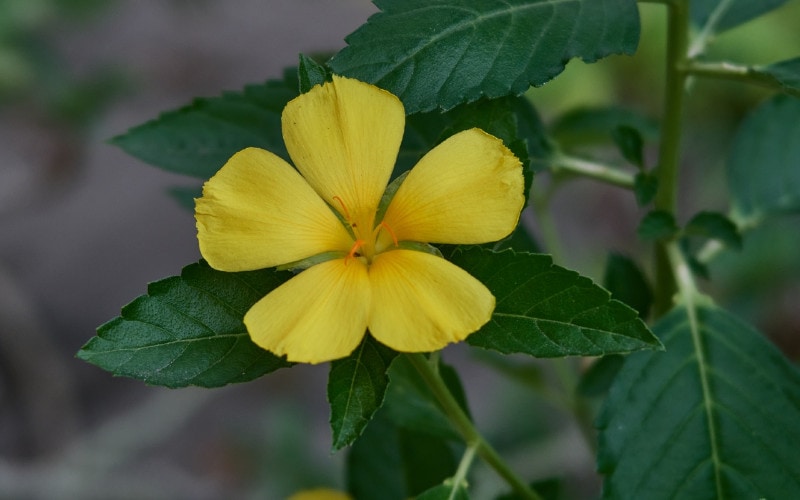
| Hardiness Zone: | 9–11 |
| Sun: | Part shade |
| Soil: | Well-drained soil |
If you are a butterfly lover, plant some yellow alder. The shrub lays close to the ground and produces buttery yellow blooms. Not only is the plant great for ground cover, but it also repels snakes too. The leaves of the plant are oval-shaped with serrated edges.
If you do not fancy having snakes in your yard but do love seeing butterflies, this shrub is ideal for you. It will require some maintenance to prevent the fast-growing cover from taking over your garden space, however.
- Attractive blooms
- Repels snakes
- Ideal ground cover
- Attracts butterflies
- Can be invasive
Conclusion
Whether a snake is big or small, venomous or not, the mere sight of one can make you feel uneasy. You may not want to harm or kill them, but you may want to keep them at bay. One way to keep the reptiles from invading your space is with plants that repel them. In doing so, you can also enjoy the butterflies and insect-repelling effects of the plants that help to keep the snakes away.
- https://balconygardenweb.com/natural-snake-repellent-plants-that-repel-snakes/
- https://www.seminoletrail.com/post/fall-poisonous-plants#:~:text=Mums%20are%20toxic%20to%20dogs,seen%20within%20a%20couple%20hours.
- https://gardenersguide.net/plants-that-repel-snakes/
- https://www.gardeningknowhow.com/edible/herbs/wormwood/wormwood-companion-plants.htm
- https://bestlifeonline.com/plants-that-repel-snakes-news/
- https://www.gardeningknowhow.com/edible/herbs/wormwood/wormwood-companion-plants.htm
Featured Image Credit: Pixabay, Pexels
Contents


